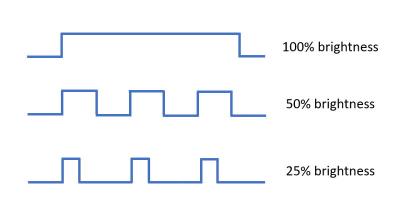Huawei recently released its flagship P30 and P30 Pro smartphones, and according to a report from China, Huawei's latest firmware update will include an option to change the display control from PWM to DC Dimming.

Pulse-Width Modulation, or PWM, is the most common way to adjust the brightness of an OLED display. PWM is the easiest way to achieve high quality brightness control, but it has some serious drawbacks - such as flicker that may cause eye strain and headaches.
 Some people suffer greatly from PWM-controlled displays - and smartphone makers (including Xiaomi, OnePlus and now apparently also Huawei) are starting to take notice and so offer DC Dimming as an alternative, even though software-based DC Dimming suffers from lower image quality.
Some people suffer greatly from PWM-controlled displays - and smartphone makers (including Xiaomi, OnePlus and now apparently also Huawei) are starting to take notice and so offer DC Dimming as an alternative, even though software-based DC Dimming suffers from lower image quality.
Read more about PWM and DC-Dimming here.
Huawei's P30 smartphone features a 6.1" 1080x2340 AMOLED display (6.47" 1080x2340 on the P30 Pro), a Kirin 980 chipset, 6/8 GB of RAM and 64/128/256 GB of storage (the P30 Pro has a 512GB variant) in addition to a Nano Memory card slot. The P30 also features a triple camera setup (quad-camera on the P30 Pro) and an under-the-display fingerprint sensor.
The P30 and P30 Pro are now shipping globally, starting at around $550. According to our information, Samsung Display supplies the 6.1" AMOLEDs for the P30 while BOE supplies the larger 6.47" AMOLEDs for the P30 Pro. Huawei's P30 Pro also adopts graphene-based thermal management films.

